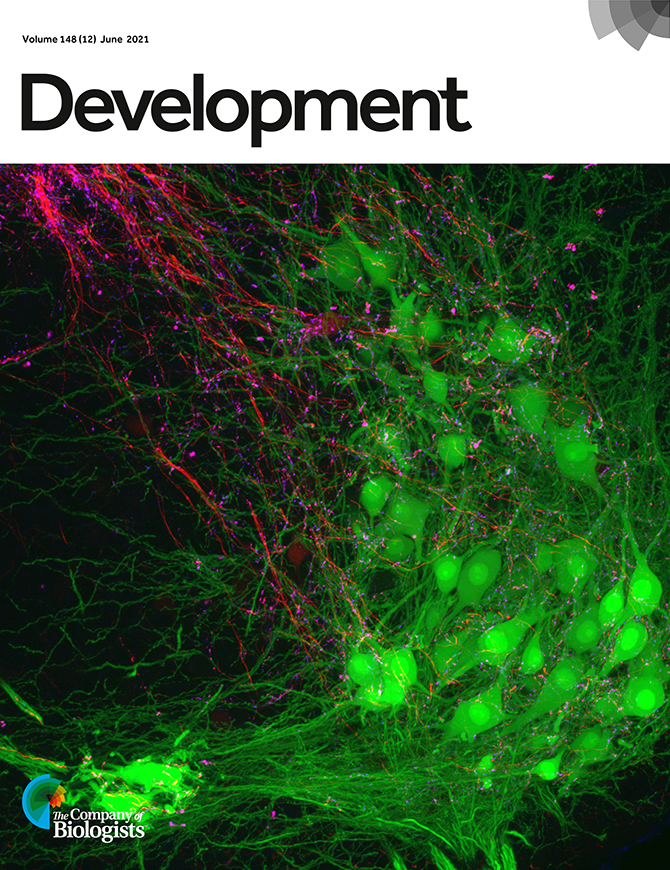You are here
HoxD transcription factors define monosynaptic sensory-motor specificity in the developing spinal cord
Abstract

Cover: Confocal microscope image of proprioceptive sensory-motor connections in the lumbar spinal cord. Motor neurons are retrogradely labelled with FITC-Dextran (green), and axons and presynaptic terminals of proprioceptive sensory neurons are labelled with anti-parvalbumin (red) and anti-vGlut1 (blue) antibodies, respectively. See Research article by Imai et al. (dev191122).
The specificity of monosynaptic connections between proprioceptive sensory neurons and their recipient spinal motor neurons depends on multiple factors, including motor neuron positioning and dendrite morphology, axon projection patterns of proprioceptive sensory neurons in the spinal cord, and the ligand-receptor molecules involved in cell-to-cell recognition. However, with few exceptions, the transcription factors engaged in this process are poorly characterized. We show here, that members of the HoxD family of transcription factors play a critical role in the specificity of monosynaptic sensory-motor connections. Mice lacking Hoxd9, Hoxd10, and Hoxd11 exhibit defects in locomotion but have no obvious defects in motor neuron positioning or dendrite morphology through the medio-lateral and rostro-caudal axes. However, we found that quadriceps motor neurons in these mice show aberrant axon development and receive inappropriate inputs from proprioceptive sensory axons innervating the obturator muscle. These genetic studies demonstrate that the HoxD transcription factors play an integral role in the synaptic specificity of monosynaptic sensory-motor connections in the developing spinal cord.


